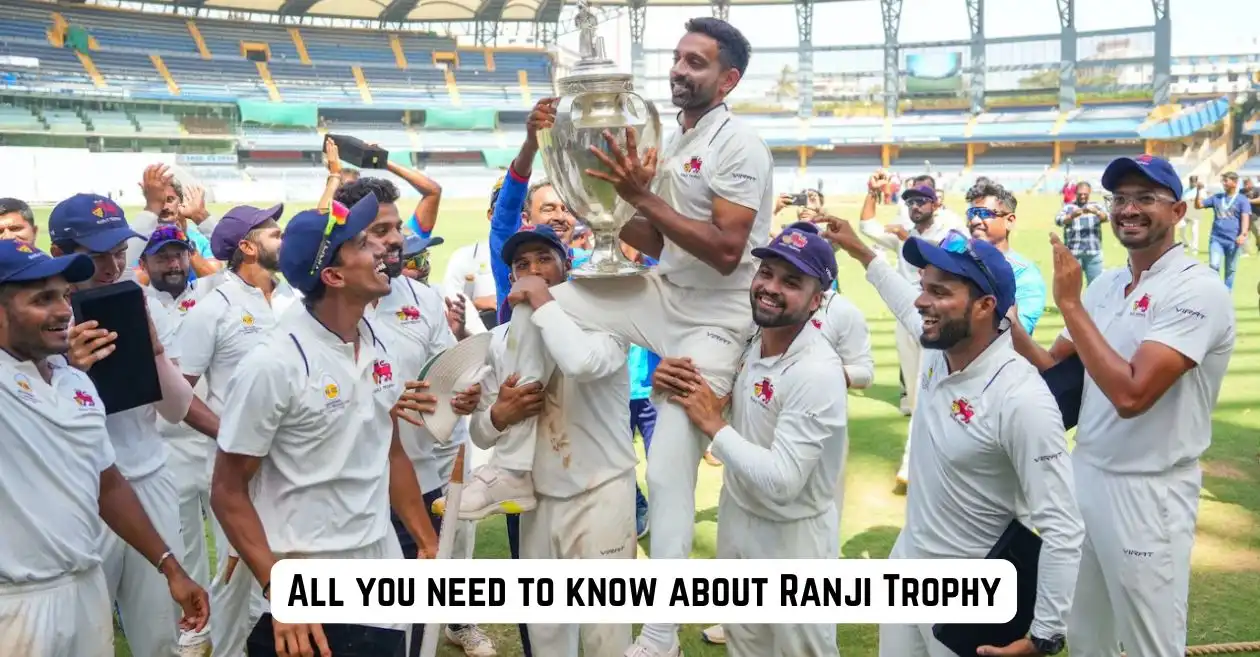Table of Contents
India’s domestic cricket season has kicked off with the Duleep Trophy, followed by the Irani Cup, and now it’s time for the most prestigious first-class competition—Ranji Trophy. Established in 1934 and named after the legendary cricketer Ranjitsinhji, the Ranji Trophy serves as a vital platform for state teams across India to showcase their talent and vie for national selection.
90th edition of Ranji Trophy is set to begin
The 2024–25 Ranji Trophy, marking its 90th edition, is set to commence on October 11 and will run through March 2025. This season introduces a restructured format designed to enhance competition and allow for greater movement between divisions. Last season, Mumbai claimed their 42nd title by defeating Vidarbha in the final.
Tournament structure and schedule
To address potential weather disruptions, the BCCI has divided the Ranji Trophy into two phases. The tournament will start with five league matches, pause for white-ball competitions—the Syed Mushtaq Ali Trophy (T20s) and the Vijay Hazare Trophy (50 overs)—and then resume.
- League Matches: Each team will play five league games over a five-week window, concluding on November 13.
- White-Ball Break: The tournament will take a break for the Syed Mushtaq Ali Trophy and Vijay Hazare Trophy.
- Resumption and Knockouts: The final two group fixtures will take place in January 2025, starting from January 23, with the knockout phase beginning on February 8. The Ranji Trophy final is scheduled for February 26 to March 2.
Understanding the Elite and Plate categories
The Ranji Trophy is structured into two main groups: the Elite Group and the Plate Group.
1. Elite Group
- Teams: Comprising 32 teams divided into four groups of eight, including established state teams.
- Competition Format: Each team plays the others in their group once, with the top two teams from each group advancing to the quarter-finals.
- Points System: Points are awarded based on match outcomes (win, draw, loss), with additional bonus points for batting and bowling performances.
2. Plate Group
- Teams: This group includes six teams, which may not have the same level of success as those in the Elite Group.
- Competition Format: Teams play each other once, and the top four qualify for the Plate group knockouts.
- Development Focus: This group serves as a crucial development platform, allowing players and teams to gain valuable experience.
Also READ: MCA announces Mumbai squad for Ranji Trophy 2024-25; no place for Sarfaraz Khan
Promotion and Relegation system
A key feature this season is the promotion and relegation system:
- Promotion: The two finalists from the Plate group will earn promotion to the Elite category for the 2025–26 season.
- Relegation: The bottom two teams from all Elite groups will be relegated to the Plate category based on their points and quotient.
Groups for Ranji Trophy 2024-25
Elite Category Groups:
- Group A: Baroda, Jammu and Kashmir, Maharashtra, Meghalaya, Mumbai, Odisha, Services, Tripura
- Group B: Andhra, Gujarat, Himachal Pradesh, Hyderabad, Puducherry, Rajasthan, Uttarakhand, Vidarbha
- Group C: Bengal, Bihar, Haryana, Karnataka, Kerala, Madhya Pradesh, Punjab, Uttar Pradesh
- Group D: Assam, Chandigarh, Chhattisgarh, Delhi, Jharkhand, Railways, Saurashtra, Tamil Nadu
Plate Category Teams:
- Arunachal Pradesh, Goa, Manipur, Mizoram, Nagaland, Sikkim
With the 2024-25 Ranji Trophy set to begin, cricket fans can look forward to an exciting season filled with intense competition, talent identification, and regional pride. The restructured format promises to bring new dynamics to India’s premier domestic cricket tournament.
